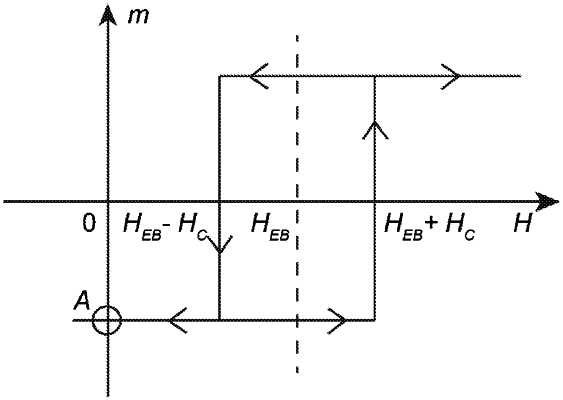| CPC H10N 52/80 (2023.02) [H10B 61/00 (2023.02); H10N 50/85 (2023.02); H10N 52/00 (2023.02)] | 6 Claims |

|
1. A magnetic random-access memory, comprising:
an antiferromagnetic layer;
a magnetic tunnel junction disposed on the antiferromagnetic layer and comprising a ferromagnetic layer disposed corresponding to the antiferromagnetic layer;
wherein the ferromagnetic layer of the magnetic tunnel junction has in-plane magnetic anisotropy, and an exchange bias field is formed between the antiferromagnetic layer and the ferromagnetic layer;
the magnetic random-access memory further comprises a bottom electrode layer, wherein the bottom electrode layer is the antiferromagnetic layer or an additional electrode layer disposed at one side of the antiferromagnetic layer away from the magnetic tunnel junction;
when electric currents in different directions are input to the bottom electrode layer to generate spin currents in different polarization directions, exchange bias fields in corresponding directions are formed between the antiferromagnetic layer and the ferromagnetic layer;
the exchange bias field formed by the antiferromagnetic layer and the ferromagnetic layer is stronger than a coercive field formed;
the whole hysteresis loop of the ferromagnetic layer is completely located on a side of H>0 or H<0 in a undisturbed state, and the exchange bias field plus the coercive field is less than 0 or the exchange bias field minus the coercive field is larger than 0;
the direction of exchange bias fields at the interface of antiferromagnet and ferromagnet is controlled by applying currents into the bottom electrode layer.
|